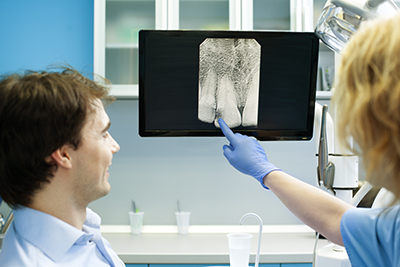At St. Lawrence Dentistry in Mississauga, our goal is to provide you with the best dental care possible while equipping you with the knowledge to make informed decisions about your health.
One topic many patients ask about is dental X-rays and their role in maintaining oral health. Let’s explore this subject together, comparing dental X-rays to other sources of radiation, and examining their benefits and considerations.
What Are Dental X-Rays?
Dental X-rays are a diagnostic tool used to detect issues that may not be visible during a routine dental exam. They help identify cavities, bone loss, impacted teeth, and other dental problems early, often preventing more significant issues and costly treatments down the road. Modern digital X-rays have made this process more efficient and reduced the radiation dose compared to older film-based methods.
Understanding Radiation Exposure
Radiation is a part of daily life. It’s present in the environment, from natural sources like the sun and soil to man-made ones like household appliances and medical imaging.
To put things into perspective:
- Natural Background Radiation: The average person is exposed to about 3 millisieverts (mSv) per year from natural sources.
- Dental X-Rays: A single peripheral dental X-ray exposes you to approximately 0.005 mSv. To compare, that’s about 200 times less than a cross-country airplane ride, or similar to just a few hours of watching television or talking on a cell phone. Now, let’s consider what would be considered hazardous: regulatory standards suggest that exposure to 50 mSv in a single day is a threshold for concern. You would need to have about 10,000 dental X-rays in a single day to reach that level—a truly unimaginable scenario!
- Other Medical Imaging: A chest X-ray delivers about 0.1 mSv, while a CT scan of the abdomen can expose you to 8 mSv or more.
The amount of radiation from a dental X-ray is incredibly small, and understanding these comparisons can help you see how minimal the exposure is in the context of everyday life.
Benefits of Dental X-Rays
Dental X-rays are an invaluable tool in maintaining good oral health. Here are some key benefits:
- Early Detection: Dental X-rays can catch issues like decay, infections, or bone abnormalities early, when treatment is less invasive and more effective.
- Customized Treatment Plans: X-rays provide detailed insights that help your dentist plan precise and personalized care.
- Monitoring Oral Health: Regular X-rays help track changes in your teeth and gums over time, ensuring potential problems are addressed promptly.
Minimizing Radiation Exposure
At St. Lawrence Dentistry, your safety is our priority. We use state-of-the-art digital X-ray technology, which emits significantly lower radiation levels than traditional methods. Additionally, protective measures like lead aprons are available to further reduce exposure. Rest assured, we follow industry standards to ensure radiation levels remain extremely low while providing the best diagnostic tools for your care.

A Standard Part of Dental Care
Dental X-rays are a standard and routine part of modern dental care. They play a crucial role in maintaining your oral health by providing detailed insights that can prevent more significant issues in the future. If you have any questions or concerns about X-rays, we’re always here to discuss them with you and ensure you feel comfortable with your care plan.
At St. Lawrence Dentistry, we encourage open communication and want you to feel confident in the care you receive. By understanding the role of dental X-rays and how they compare to other sources of radiation, you can make informed decisions about your dental health.
For more information or to schedule an appointment, contact us at St. Lawrence Dentistry in Mississauga. Your health and peace of mind are our top priorities.
- St. Lawrence Dentistry Looks Forward To St. Patrick’s Day! - March 12, 2025
- Understanding Dental X-Rays and Radiation: What You Should Know - January 13, 2025
- Happy New Year from St. Lawrence Dentistry! - December 30, 2024











